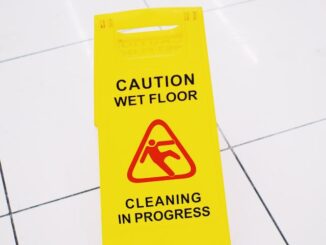
Winter’s frosty grip transforms Ontario’s landscapes, but it also creates a hidden danger zone – icy sidewalks and treacherous walkways. A slip and fall on snow or ice can leave you injured and facing a legal battle against the property owner. However, recent amendments to the Occupiers’ Liability Act (OLA) have introduced a new hurdle: a strict 60-day notice requirement. This article dives into the intricacies of these changes and equips you with strategies to navigate the legal landscape after a winter wonderland mishap.
The OLA and the Duty of Care: A Balancing Act
The OLA establishes the foundation for slip and fall claims in Ontario. It outlines the duty of care for property owners or occupiers, who are legally obligated to maintain a reasonably safe environment for visitors. During winter months, this translates to a responsibility for clearing snow and ice accumulations, applying de-icing materials, and posting warning signs when necessary.
The 60-Day Notice: A New Hurdle on the Path to Compensation
Prior to December 2020, there wasn’t a specific time limit for notifying property owners of slip and fall incidents on private property. However, recent changes to the OLA introduced a significant shift:
- 60-Day Deadline: Victims of slip and fall accidents on private property caused by snow or ice now have only 60 days from the date of the accident to provide a written notice to the property owner and, in some cases, the independent contractor responsible for snow removal. Failing to meet this deadline can significantly weaken your claim, potentially barring you from pursuing legal action altogether.
This time limit is strict. It emphasizes the importance of taking swift and decisive action after a slip and fall accident.
The Rationale Behind the 60-Day Notice: A Two-Sided Coin
The rationale behind the 60-day notice period has generated debate. Proponents argue it allows property owners to promptly investigate the accident, gather fresh evidence, and potentially address any remaining ice or snow hazards. However, critics voice concerns about potential disadvantages for injured individuals:
- Shock and Confusion: The initial aftermath of a fall can be overwhelming, leading to delays in meeting the deadline due to shock, confusion, or seeking medical attention.
- Lack of Awareness: Some individuals might not be aware of the recent changes to the OLA, inadvertently missing the crucial 60-day window.
Exceptions and Mitigating Factors: A Glimmer of Hope
While the 60-day deadline is a new challenge, it’s not an insurmountable one. Here are some exceptions and mitigating factors that might be considered:
- Death: The 60-day notice requirement is waived if the slip and fall accident tragically results in the victim’s death.
- Reasonable Excuse: A judge might excuse a late notice if the victim can demonstrate a valid reason for missing the deadline. This might include serious injuries requiring hospitalization, mental incapacity, or lack of knowledge of the legal requirement. The onus lies on the victim to prove such an excuse.
- Prompt Action Despite Late Notice: Even if your notice arrives slightly late, taking immediate action to contact the property owner and gather evidence can demonstrate your seriousness and potentially strengthen your case.
Maximizing Your Chances Within the 60-Day Window: Time is of the Essence
Knowing the 60-day deadline empowers you to take immediate action after a slip and fall on snow or ice:
- Seek Medical Attention: Your health is paramount. Get medical attention for your injuries and obtain documentation of your condition. This provides crucial evidence for potential legal action.
- Gather Evidence: If possible, take photos of the scene of the fall, the ice or snow accumulation that caused it, and your injuries. Note the date, time, and weather conditions. This visual documentation serves as important evidence.
- Identify the Responsible Party: Determine who is responsible for maintaining the property where the accident occurred. This could be the property owner, their tenant, or a hired independent contractor responsible for snow removal.
- Deliver the Written Notice: Within the 60-day window, send a written notice to both the property owner/occupier and the independent contractor (if applicable). The notice should detail the accident, including the location, date, time, and your intention to claim.
Delivery Methods for the Written Notice: Choosing the Right Path
The OLA allows for two methods of delivering the written notice:
- Personal Service: This involves delivering the notice directly to the property owner or their representative.
- Registered Mail: Sending the notice via registered mail with a return receipt provides a record of delivery, a crucial piece of evidence if the recipient denies receiving notice.


